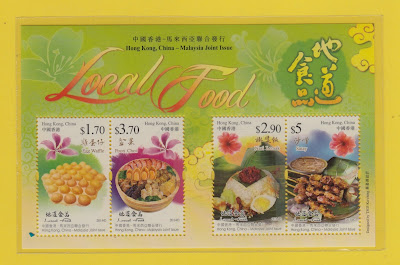Printing Procedure: Offset
Paper: Gummed
Seal size: 57.60 mm x 40.90 mm
Size of Sheet: 150 mm x 105.60 mm
Postal value of stamps: € 0.90 each stamp
Block turnover: 220,000
With images that invite the tasting and the delight of the palate, the series Gastronomy Española is broadcast in a leaf-block format, with two stamps that highlight the gastronomic titles of Vitoria and Cáceres.
Vitoria-Gasteiz has held the title of Spanish Capital of Gastronomy in 2014. The birthplace of great chefs and the headquarters of some of the most important training centers in the Basque Country, the capital of Alava has a hotel sector covering more than 300 restaurants and 1,200 bars and cafes. Its cuisine is based mainly on seasonal products, which give rise to traditional dishes and other more imaginative of the so-called "new Basque cuisine." Typical of this land, as well as the rest of the Basque Country and Navarre, are the gastronomic societies, which prove that the culinary art transcends from the stoves to social life. These societies were created in the mid-nineteenth century for the exclusive use of men. At present they have been accommodating to gender equality and admit women.
Among the types of gastronomic shops that are located in Vitoria-Gasteiz are: the bakeries and workshops, with exclusive sweets from the capital of Álava, such as the basquitos and nesquitas; the delicatessen shops, with specialties of preserves, cheeses and charcuterie, and the enotecas, with the txakolis and the wines of the Rioja Alavesa.
In 2015, the title of Spanish Capital of Gastronomy is held by Cáceres. The choice was made by a jury, composed of 12 professionals from the hotel, tourism and journalism, who highlighted "the importance and variety of agro-food products" of this land. With eight appellations of origin and two protected geographical indications, the products of Caceres present in common the quality, the natural origin and the traditional elaboration that has lasted over time. Casar cheese cheeses, Ibores cheeses, paprika de la Vera, and Iberian hams and sausages from dehesas are some of the genuine products of the region.
In the seals they present, respectively, a bar of varied pinchos characteristic of Vitoria, Capital of the Gastronomy 2014; and a still life of typical products of Cáceres, Capital of Gastronomy in 2015. The images are prolonged in the block sheet giving continuity to the composition.
Yolanda Estefanía. Library of the Postal and Telegraphic Museum
Paper: Gummed
Seal size: 57.60 mm x 40.90 mm
Size of Sheet: 150 mm x 105.60 mm
Postal value of stamps: € 0.90 each stamp
Block turnover: 220,000
With images that invite the tasting and the delight of the palate, the series Gastronomy Española is broadcast in a leaf-block format, with two stamps that highlight the gastronomic titles of Vitoria and Cáceres.
Vitoria-Gasteiz has held the title of Spanish Capital of Gastronomy in 2014. The birthplace of great chefs and the headquarters of some of the most important training centers in the Basque Country, the capital of Alava has a hotel sector covering more than 300 restaurants and 1,200 bars and cafes. Its cuisine is based mainly on seasonal products, which give rise to traditional dishes and other more imaginative of the so-called "new Basque cuisine." Typical of this land, as well as the rest of the Basque Country and Navarre, are the gastronomic societies, which prove that the culinary art transcends from the stoves to social life. These societies were created in the mid-nineteenth century for the exclusive use of men. At present they have been accommodating to gender equality and admit women.
Among the types of gastronomic shops that are located in Vitoria-Gasteiz are: the bakeries and workshops, with exclusive sweets from the capital of Álava, such as the basquitos and nesquitas; the delicatessen shops, with specialties of preserves, cheeses and charcuterie, and the enotecas, with the txakolis and the wines of the Rioja Alavesa.
In 2015, the title of Spanish Capital of Gastronomy is held by Cáceres. The choice was made by a jury, composed of 12 professionals from the hotel, tourism and journalism, who highlighted "the importance and variety of agro-food products" of this land. With eight appellations of origin and two protected geographical indications, the products of Caceres present in common the quality, the natural origin and the traditional elaboration that has lasted over time. Casar cheese cheeses, Ibores cheeses, paprika de la Vera, and Iberian hams and sausages from dehesas are some of the genuine products of the region.
In the seals they present, respectively, a bar of varied pinchos characteristic of Vitoria, Capital of the Gastronomy 2014; and a still life of typical products of Cáceres, Capital of Gastronomy in 2015. The images are prolonged in the block sheet giving continuity to the composition.
Yolanda Estefanía. Library of the Postal and Telegraphic Museum










